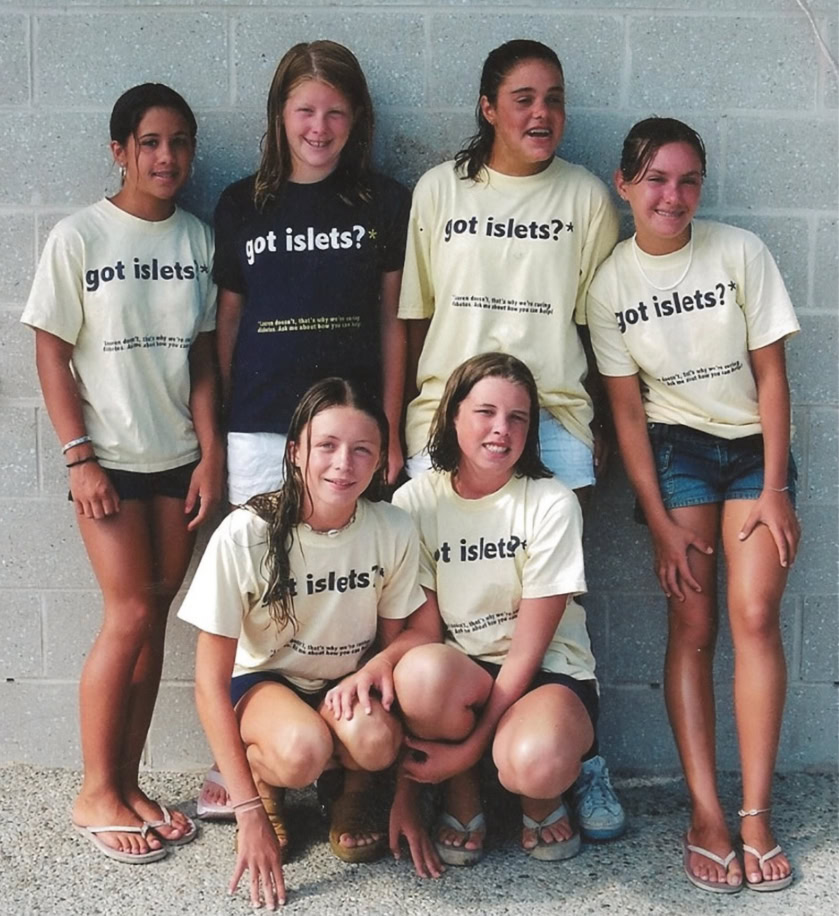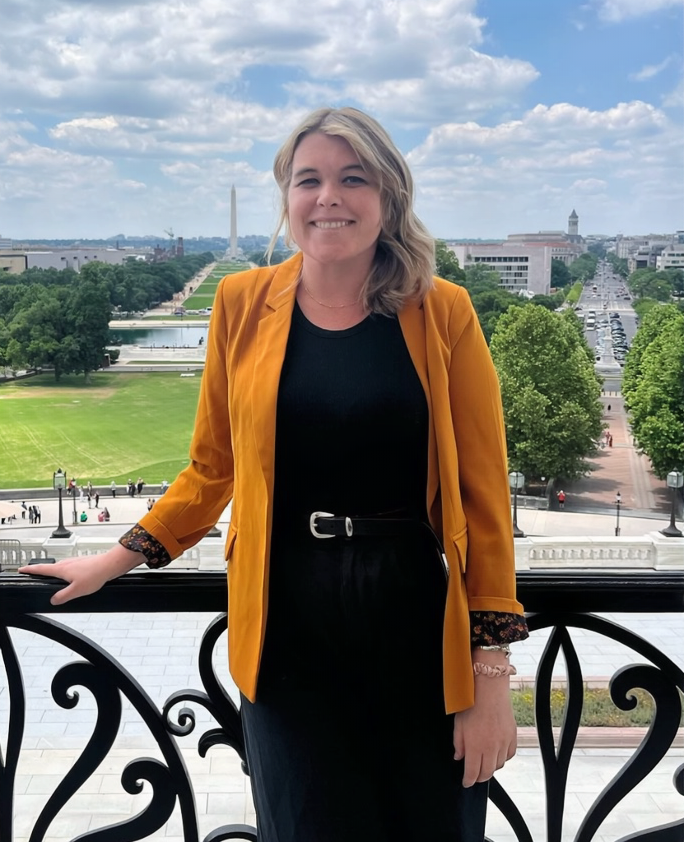
Written by author and dedicated Breakthrough T1D supporter, advocate, and volunteer Moira McCarthy, pictured above with her daughter, Lauren
It’s now part of my morning routine, but not in the way most type 1 diabetes (T1D) parents would expect.
I grab my phone, open the continuous glucose monitor (CGM) app, and squeal with delight while wiping a strange salty substance from my eyes.
Because, just about every morning, I see something I thought would never be possible in my daughter’s 28 years of living with T1D: a perfectly straight line, totally in range.
It feels—and I not only don’t use this word lightly, but I’ve also never actually used it for a diabetes breakthrough before—transformational.
Starting a new T1D tool

My daughter, Lauren, diagnosed with T1D at age 6 and now almost 34, was late to the game when it came to automated insulin delivery (AID) system adoption. But, about three months ago, she–as her amazing adult endocrinologist kept telling me she someday would when she was ready–decided to give it a try. She chose one of the new, snappy automated insulin delivery systems as her newest tool after a seven-year pump break using pens and a CGM.
She was nervous. She’d experienced some tough years of burnout in the past and had long connected that with using a pump. She was hopeful, but skeptical.
It took her about 24 hours to realize this was truly worth it. And it took me about as much time to feel saved. Saved!
And here’s the cool thing: As long-time JDF, then JDRF, and now Breakthrough T1D volunteers, we absolutely saved ourselves.
That’s because, raising our hands from nearly the start (we attended our first Walk a year after her diagnosis), we were able to not only dream of what could be, but also make it happen.
There’s power and beauty in that, at a level I didn’t anticipate. And that’s the story I want to share. How we, just an average American family impacted by T1D, were able to lead, push, advocate, and win our way to access to smart devices like automated insulin delivery systems. We helped create a solution.
I should preface this with a fact: I’ve never been one to worry about my daughter. I attribute that to having raised her before technology and before the internet. We learned to trust and know that sometimes things go awry, but we can fix them.
But all T1D parents worry. Me? I worried about way, way down the road. Would she be okay in her midlife and later? I wasn’t sure.
Fueling breakthroughs from the ground up

Nearly 20 years ago, I was at an International Board of Directors meeting when then member Jeffrey Brewer had what I call his “pound the shoe on the table” moment. He offered $1 million with the stipulation that we, as an organization and as people passionate about a cure, also focus on creating technology to help people live better with T1D.
I was all in.
As National Advocacy Chair at the time, I helped our organization find funding and people for the original CGM trials. (Did you know no one else would do it, so we just did it ourselves with such great success that industry jumped on board?) We also fought for coverage—we literally found a person in every major insurance plan and filled out paperwork to get the first person covered in each, setting the precedent and swinging the doors open for all (well, almost all; insurance is a work in progress).
We did the Walks—our team, “Got Islets,” was one of the most successful in the nation. Then my daughter and I did the Rides, with our many friends continuing to donate after decades of us asking. Being directly involved gave me a voice in where funding went and how we focused our efforts. To me, tools that lessen the daily, hour-by-hour burden just made sense.
But, until a few months ago, it lived only in my imagination. While we’d always been early adopters (Lauren was the first young child in our state to go on a pump and one of the first in America to go on a CGM), as I said, it took time for her to be ready for this.
Little victories add up to big outcomes

Friends, it’s not a fever dream. This is real, and it’s spectacular. My daughter’s A1c fell quickly to nearly non-diabetic range. Her other labs are, as her endocrinologist said, “those of a person without diabetes.”
But more than that: She feels great! “Mom,” she told me the other day, “this sleeping all night thing? It’s pretty great!”
She feels more focused and refreshed—and since she works in advocacy fighting for coverage and treatments for Duchenne Muscular Dystrophy, that matters.
A Soul Cycle and Pilates enthusiast, she’s finally solved her workout dilemma. Before the automated insulin delivery system, her pattern was this: work out hard, crash low, eat all the carbs on the planet, marinate in remorse. Now? Activity mode works like a charm for her. No more blood sugar crashes, and way more workout satisfaction. Post-workout, she marinates in the feeling of success. The little things are the big things.
Finding our voice for powerful change
When we talk about my daughter’s improvements (and they’re such a big deal, we talk about them a lot!), we always go back to how we helped make this happen.
Like any long, long-term relationship, the organization and I have had our ups and downs. But I realize this: Had I not stumbled upon that Walk in 1998 (thank you, Marshall’s employee, for asking me if I wanted to give a dollar to help cure diabetes. Look what you did!), we may not have found our power, our voices, and our ability to bring positive change. And that feeling of having been a part of bettering her life firsthand? It’s incredible. We found power in what felt like a powerless future.
By the way, that “we” is more than my family. Every time I bump into friends who are long-time donors to this cause, I click on my phone, show them her in-range chart, and cry as I tell them, “YOU did this for us. YOU made this happen. I promised you every time you donated, I’d never just let your money go into a black hole. Here’s the proof. You did this for my kid.”
And me? An average suburban mom, given what seemed on day 1 to be an unbearable burden? Rather than give in to that, Breakthrough T1D helped me rise from it.
If you see me around, ask me to show you the graph I looked at that morning. When that salty substance leaks down my cheeks, know those are tears of joy.
And of thanks. We did what every parent dreams of: me, my friends, and Breakthrough T1D changed my child’s life for the better. This mom is over the moon. I cannot wait to see what the next generation of T1D parents and people living with T1D make happen. Because it’s truly in our hands.
We are our own solution. And from this view, that feels pretty darn great.